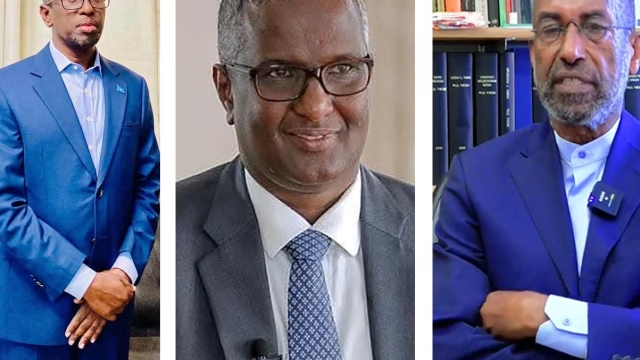The month-late start of Somalia’s long rains may bring respite to the country’s farmers and pastoralists,…
 The month-late start of Somalia’s long rains may bring respite to the country’s farmers and pastoralists, but for hundreds of thousands of displaced people crowded into an insurgent-controlled area almost entirely bereft of humanitarian assistance, the deluge delivers only more problems.
The month-late start of Somalia’s long rains may bring respite to the country’s farmers and pastoralists, but for hundreds of thousands of displaced people crowded into an insurgent-controlled area almost entirely bereft of humanitarian assistance, the deluge delivers only more problems.
The “Gu” rains usually start in early April, but this year were late across much of the country. In and around Mogadishu they started only in the second week of May.
Somalia’s greatest concentration of people – some 410,000 – displaced by conflict between the Transitional Federal Government and armed groups such as Al Shabab live in the 30km long Afgoye Corridor, south of the capital. It is under the control of Al Shabab.
“The displaced now have to cope with leaking tarpaulins and tents,” said Jowahir Ilmi, head of the Somali Women’s Concern (SWC), one of very few sources of assistance in the corridor.
So far, she said, the rains had not been very heavy so not much damage had been done to the IDP camps.
“We expect the rains to begin in full force today or tomorrow and if that happens, the situation of the IDPs will be grave,” Ilmi told IRIN on 10 May.
She said there was an urgent need for shelter material. “Food and medicines are in short supply but right now shelter material is the most urgent need.”
Halimo Sheikh Hassan, a mother of seven, told IRIN she had lived in the corridor’s Arbiska camp for the past two years. “I had a small shelter which I shared with my children but now the plastic sheeting that covers my house has become old and has big holes.”
Hassan said she and many other IDPs used to find work in Mogadishu’s Bakara market, “but that is now not possible. Because of the increased incidents of violence, the market is almost closed. Most traders like us have run for their lives.”
In the past, Hassan said, many IDPs depended on aid agencies during tough times but now there were no agencies on the ground since most left over a year ago.
“With rains and very little or no food and this kind of shelter I am not sure how we will survive this year,” she said.
A medical worker told IRIN many of the IDPs were already weak, particularly children, pregnant women and lactating mothers.
Isho Hassan Osman of SWC said: “We already have many cases of measles and AWD [acute watery diarrhoea] in our clinic. The rains will complicate an already bad situation.”
Khadijo Fidow, another IDP, used to make ends meet by selling grass to pastoralists but that now that the rains had come, the pastoralists would no longer need to buy grass from traders.
“I used to make about 80,000 shillings [about US$2.80] a day from selling grass; that was enough for one meal a day,” Fidow said. “Now that is in jeopardy. I don’t know what will happen next. It seems things go from bad to worse for us. God help us.”
According to UN estimates, at least 2.4 million Somalis need help across the country. These include IDPs in areas controlled by the opposition Al-Shabab group: 410,000 in the Afgoye Corridor, 15,200 in the Balad corridor [30km north of Mogadishu] and 55,000 in Dayniile, northwest of Mogadishu.
Source: IRIN


